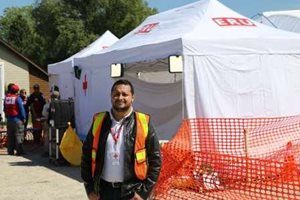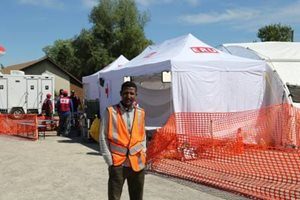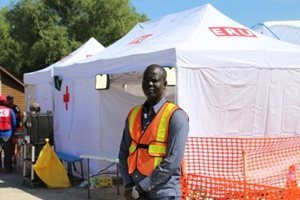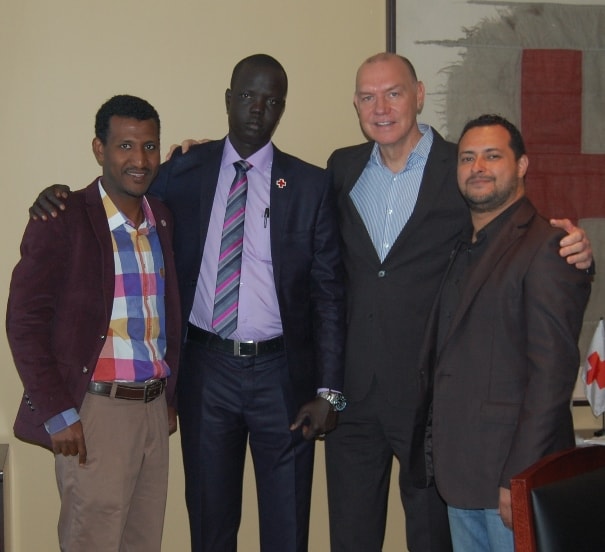Guest post by Stephanie Murphy, Communications Coordinator at the Canadian Red Cross

The Canadian Red Cross’
Emergency Response Unit (ERU) helps provide emergency surgical and medical care assistance during disasters around the world. The emergency field hospital can be deployed on very short notice and is made up of trained personnel and equipment. The units are fully self-sufficient for one month and can be deployed for up to four months. The training for the ERU is extensive and intense – and involves a realistic simulated disaster that gives new aid workers the chance to practice their skills before going into the field.
At the most recent training, the Canadian Red Cross welcomed three delegates from other national Red Cross societies. Degsew Amanu, head of communications and resource mobilization, Ethiopian Red Cross; Marial Mayom Riak, head of communications, South Sudan Red Cross; and Carlos Romero, director communications and image, Honduras Red Cross joined staff and volunteers in Schomberg, Ontario, to assist with the training and learn valuable skills to take home with them.

The delegates’ visit is an important part of two projects, Capacity Building for Emergency Response in the Americas (CERA) and Strengthening Emergency Response in Africa (SERA), both programs help other national societies strengthen their ability to respond to disasters and emergencies in their own countries. Riak says that SERA is different from other forms of aid because it helps “build for the future,” rather that just providing short-term assistance. The ERU training was very enlightening for all three delegates, as they were able to learn new skills – both for responding to and communicating about a disaster – that they will be able to apply in their respective countries.

Amanu was impressed by the sheer scale of the training. He says the situation was very interactive and educational, and helped highlight the complex role of communicators during disasters. Romero found that the training was important to allow delegates to test their skills in a practical environment. He notes that while planning is important, when an emergency strikes emotions can affect how individuals react, making training like this essential.
All three national societies focus their communications largely on promoting visibility of the Red Cross and its services in each country. While the three societies have some programming that is different, disseminating the fact that these programs are available, and encouraging the public to use them, is a common goal for all three national societies. Romero perhaps puts it best when he notes that within the Red Cross, language is not a barrier because at the end of the day it’s about the universal principles we all follow. He compared it to a “brotherhood [where] everyone takes care of each other.”
This initiative is made possible with the financial support of the Government of Canada.

The international delegates meet with Canadian Red Cross President and CEO Conrad Sauvé.